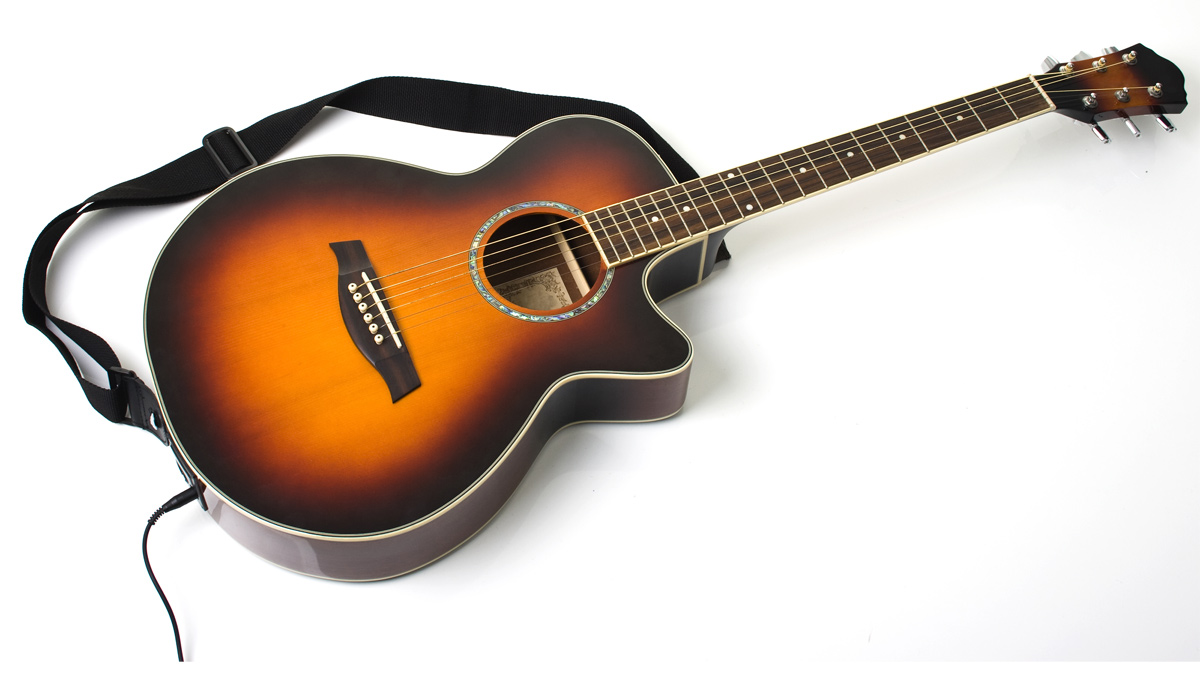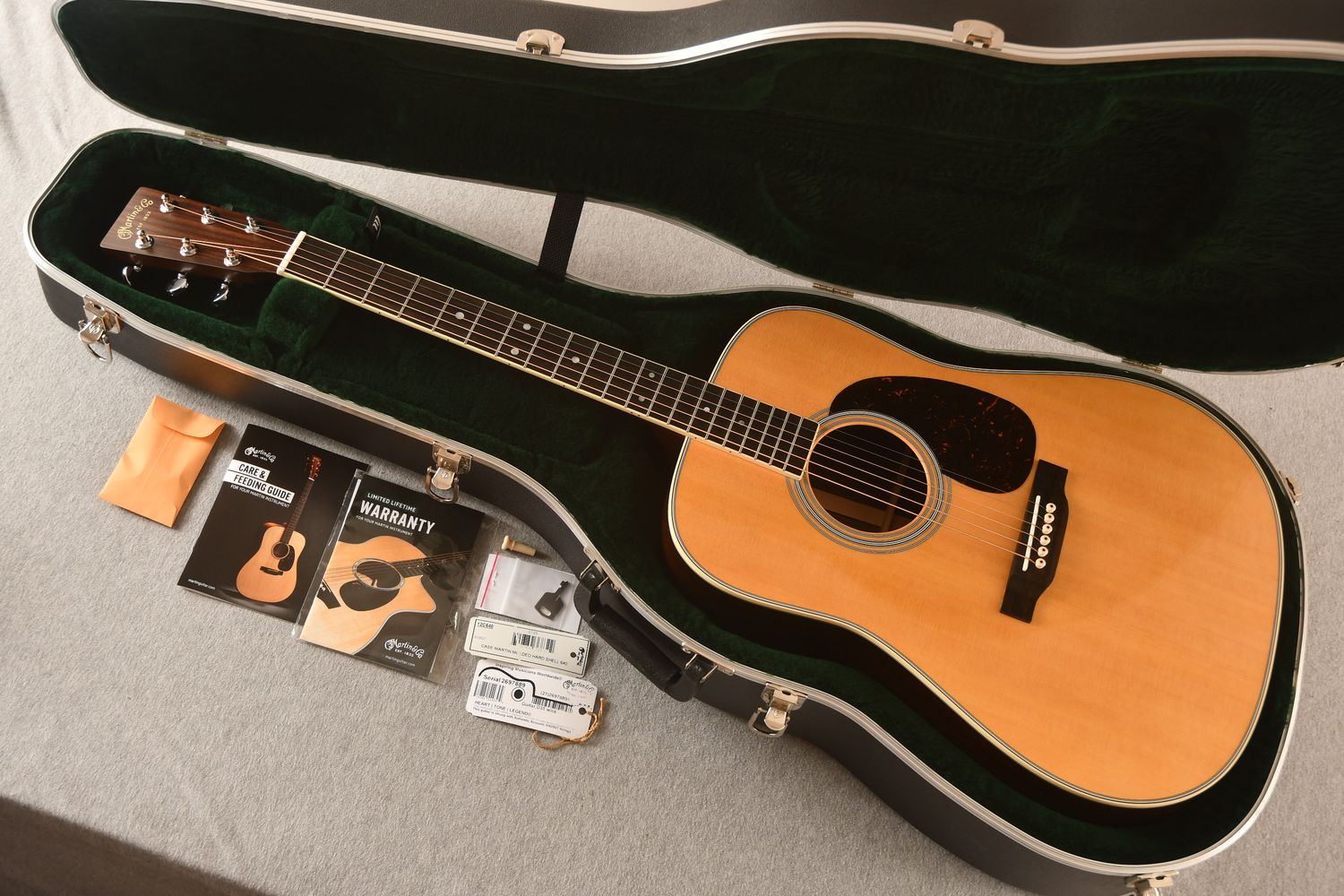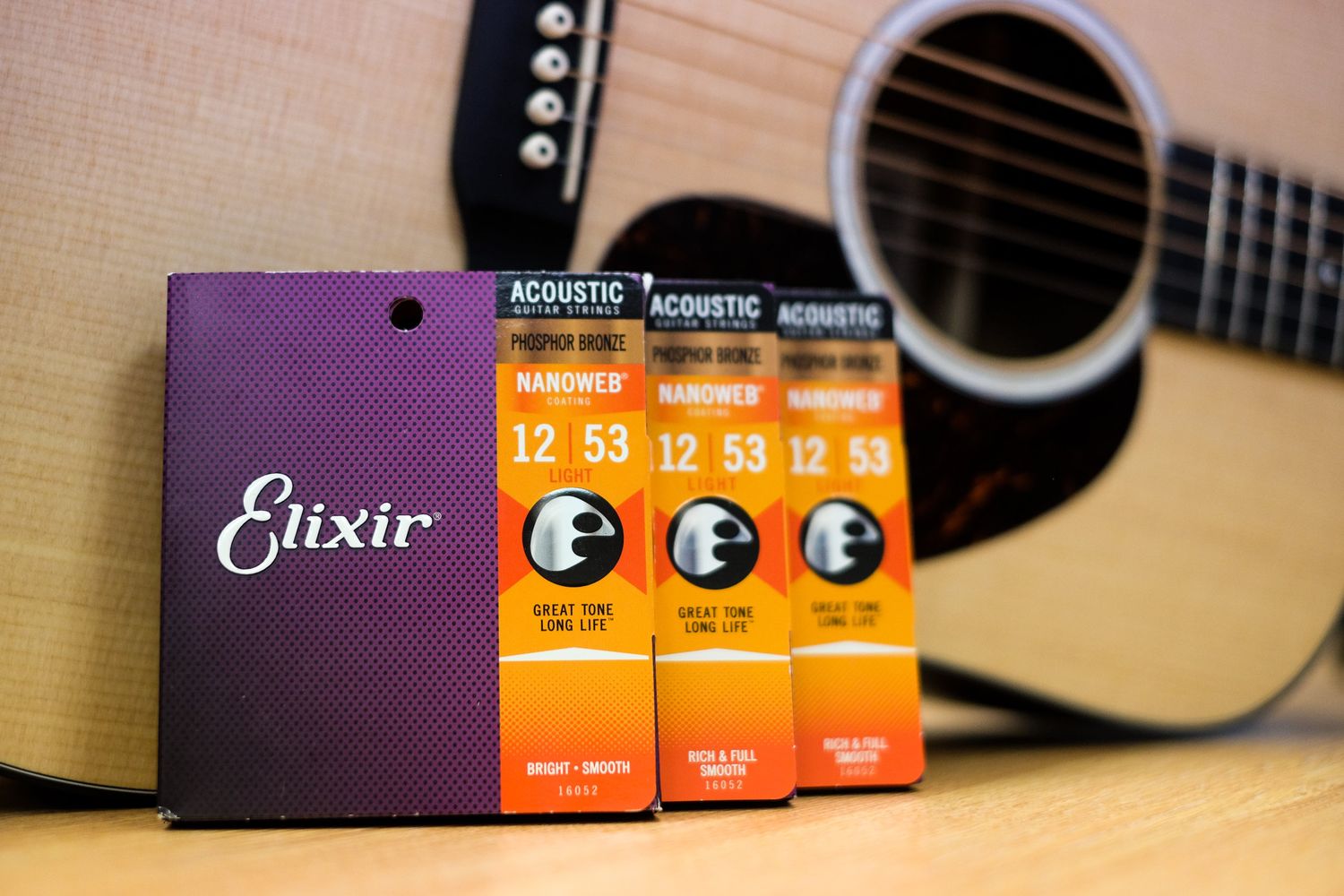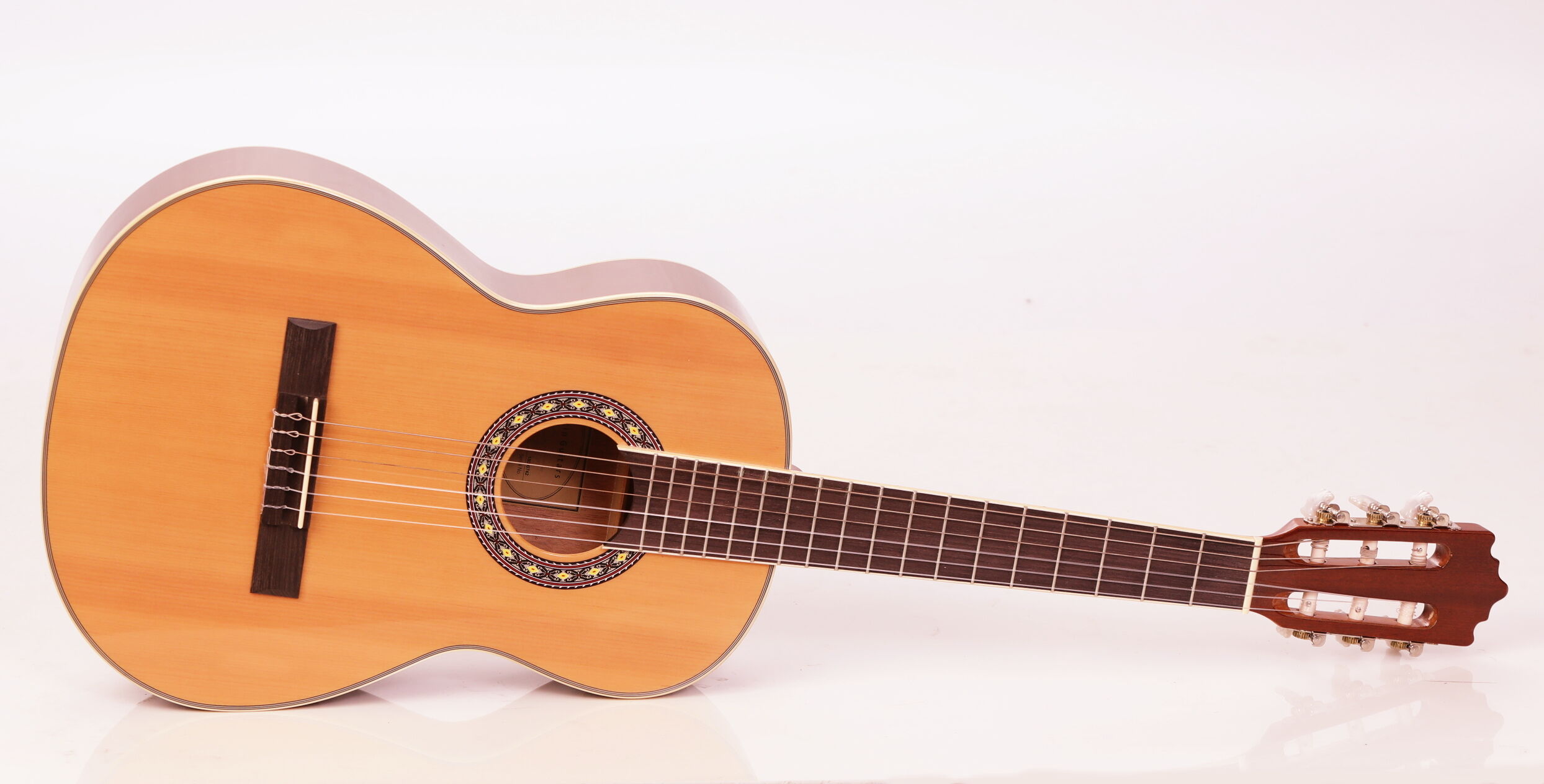Home>Production & Technology>Acoustic>What Key Is An Acoustic Guitar In


Acoustic
What Key Is An Acoustic Guitar In
Published: March 12, 2024
Discover the perfect key for your acoustic guitar with our comprehensive guide. Learn how to choose the right key and enhance your playing.
(Many of the links in this article redirect to a specific reviewed product. Your purchase of these products through affiliate links helps to generate commission for AudioLover.com, at no extra cost. Learn more)
Table of Contents
Introduction
Acoustic guitars are beloved for their warm, resonant tones and versatility across various musical genres. Whether you're strumming along to folk ballads, fingerpicking intricate melodies, or jamming with friends around a campfire, the acoustic guitar is a timeless instrument that captivates both players and listeners alike.
One of the fundamental aspects of playing the acoustic guitar is understanding the concept of keys. In music theory, a key refers to the set of notes and chords that form the foundation of a song or musical piece. Each key has its own unique character and emotional resonance, allowing musicians to evoke different moods and atmospheres through their compositions and performances.
For acoustic guitarists, having a solid grasp of keys is essential for expanding their musical repertoire and improvisational skills. Whether you're a beginner learning your first chords or an experienced player looking to delve deeper into the nuances of musical expression, understanding the relationship between keys and the acoustic guitar is a valuable asset.
In this article, we'll explore the concept of keys in the context of acoustic guitar playing, shedding light on the standard tuning of an acoustic guitar and how it relates to different keys. We'll also provide practical tips for navigating various keys on the acoustic guitar, empowering you to unlock new creative possibilities and enrich your musical journey. So, grab your acoustic guitar, tune up, and let's embark on a melodic exploration of the captivating world of keys in acoustic guitar playing.
Understanding the Standard Tuning of an Acoustic Guitar
The standard tuning of an acoustic guitar serves as the foundational framework for exploring different keys and creating harmonious melodies. When we talk about standard tuning, we are referring to the conventional arrangement of the six strings on the guitar, which are tuned to specific pitches. Understanding this tuning is crucial for comprehending how different keys are accessed and utilized on the instrument.
In standard tuning, the six strings of the acoustic guitar are typically tuned to the following pitches, from the lowest string to the highest:
- E (the lowest and thickest string)
- A
- D
- G
- B
- E (the highest and thinnest string)
This arrangement of pitches forms the familiar EADGBE tuning that is the starting point for countless musical compositions and performances. The intervals between the strings create a harmonious relationship that allows for the seamless transition between chords and notes, enabling guitarists to express a wide range of emotions and musical ideas.
By familiarizing oneself with the standard tuning of an acoustic guitar, players gain a solid foundation for navigating different keys and chord progressions. This familiarity facilitates the exploration of diverse musical styles and genres, empowering guitarists to adapt their playing to various musical contexts.
Moreover, understanding the standard tuning of an acoustic guitar opens the door to creative experimentation and improvisation. As players become attuned to the unique tonal qualities of each string and the relationships between them, they can unlock the full potential of the instrument, unleashing their creativity and musical expression.
In essence, the standard tuning of an acoustic guitar serves as the starting point for a musical journey filled with endless possibilities. It provides the essential groundwork for delving into the rich tapestry of keys and chords, enabling guitarists to craft captivating melodies and connect with audiences on a profound level.
As we continue our exploration of keys on the acoustic guitar, the understanding of standard tuning will serve as a cornerstone for unraveling the intricacies of musical harmony and unlocking the instrument's full potential. With this foundational knowledge in place, we are poised to delve deeper into the captivating world of keys and their profound impact on acoustic guitar playing.
Exploring Different Keys on an Acoustic Guitar
The concept of keys in music encompasses a diverse array of tonal possibilities, each evoking its own unique emotional resonance and musical character. For acoustic guitarists, the ability to navigate different keys opens up a rich tapestry of melodic exploration and creative expression. Whether you're strumming chords, fingerpicking intricate patterns, or crafting soul-stirring melodies, understanding how keys manifest on the acoustic guitar is essential for expanding your musical repertoire and honing your craft.
In the context of the standard tuning of an acoustic guitar, each key presents a distinct set of chords and notes that form the harmonic foundation for a song or musical piece. When exploring different keys on the acoustic guitar, it's crucial to understand the relationship between the open strings and the chords associated with each key. This knowledge empowers guitarists to seamlessly transition between chords and notes, creating fluid and captivating musical arrangements.
One of the defining characteristics of the acoustic guitar is its versatility in accommodating various keys. Whether you're playing in the soulful key of E major, the introspective key of A minor, or the uplifting key of G major, the acoustic guitar lends itself to the exploration of diverse tonalities and musical textures. Each key offers its own palette of expressive possibilities, allowing guitarists to convey a wide range of emotions and atmospheres through their playing.
As you delve into the world of keys on the acoustic guitar, you'll discover the intricate interplay between chord shapes, finger positions, and melodic patterns. Whether you're strumming open chords, incorporating melodic embellishments, or experimenting with alternate tunings, the acoustic guitar provides a canvas for boundless creative exploration within different keys.
Moreover, the concept of modulating between keys adds an additional layer of depth and complexity to acoustic guitar playing. Modulation involves transitioning from one key to another within a musical composition, offering a dynamic means of building tension, creating contrast, and infusing a sense of progression into your playing.
In essence, exploring different keys on the acoustic guitar is a journey of sonic discovery and artistic growth. It invites guitarists to immerse themselves in the rich tapestry of musical expression, empowering them to craft evocative melodies and connect with listeners on a profound level. By embracing the nuances of different keys and their impact on acoustic guitar playing, musicians can unlock new realms of creativity and expand their musical horizons.
As we continue our exploration of keys on the acoustic guitar, we'll delve deeper into practical tips for playing in different keys, equipping you with the knowledge and skills to infuse your playing with depth, emotion, and musicality.
Tips for Playing in Different Keys on an Acoustic Guitar
Playing in different keys on an acoustic guitar opens up a world of musical possibilities, allowing guitarists to infuse their playing with depth, emotion, and versatility. Whether you're a beginner exploring the fundamentals of key-based playing or an experienced musician seeking to refine your skills, the following tips will empower you to navigate diverse keys with confidence and creativity.
-
Master Chord Transitions: Familiarize yourself with the chord shapes associated with each key and practice smooth transitions between them. By honing your ability to switch between chords seamlessly, you'll enhance the fluidity and coherence of your playing, enabling you to effortlessly navigate through different keys.
-
Embrace Barre Chords: Incorporating barre chords into your playing expands your harmonic palette and facilitates key changes. Barre chords allow you to transpose chord shapes up and down the fretboard, providing flexibility in accessing various keys and adding richness to your musical arrangements.
-
Explore Capo Techniques: Utilizing a capo empowers you to change the key of a song without altering its chord shapes. Experiment with placing the capo on different frets to transpose the song to a key that suits your vocal range or complements other instruments in a musical ensemble.
-
Develop Fingerpicking Patterns: Enhance your fingerpicking repertoire by mastering patterns that complement the tonalities of different keys. By refining your fingerstyle techniques within specific keys, you can evoke distinct moods and textures, adding depth and expressiveness to your acoustic guitar playing.
-
Understand Scale Relationships: Gain insight into the scales associated with each key, allowing you to improvise and create melodic embellishments that resonate with the tonal center of the key. Understanding scale relationships empowers you to infuse your playing with melodic creativity and harmonic cohesion.
-
Experiment with Alternate Tunings: Explore alternate tunings such as open tunings or drop tunings to unlock unique sonic textures and harmonic possibilities within different keys. Alternate tunings offer a fresh perspective on familiar keys, inspiring innovative musical explorations and compositions.
-
Listen and Learn from Diverse Repertoires: Immerse yourself in a diverse range of musical styles and genres to absorb the nuances of key-based playing. Studying songs across various keys exposes you to different chord progressions, melodic structures, and tonal characteristics, enriching your musical vocabulary and insight.
By incorporating these tips into your acoustic guitar practice, you'll develop a nuanced understanding of playing in different keys, elevating your musical fluency and artistic expression. Embrace the inherent versatility of the acoustic guitar as you embark on a melodic journey through diverse keys, and let your playing resonate with the captivating essence of musical exploration.
Conclusion
In conclusion, the world of keys in acoustic guitar playing is a captivating realm filled with boundless opportunities for musical expression and creative exploration. From the foundational understanding of standard tuning to the intricate interplay of chords and scales within different keys, acoustic guitarists embark on a melodic journey that transcends technical proficiency and delves into the heart of musical storytelling.
As we've delved into the concept of keys on the acoustic guitar, it becomes evident that each key holds its own unique allure, inviting players to craft evocative melodies and connect with listeners on a profound level. The versatility of the acoustic guitar in accommodating diverse keys empowers musicians to convey a wide range of emotions and atmospheres, from the introspective depths of minor keys to the uplifting resonance of major keys.
By mastering chord transitions, embracing barre chords, and exploring capo techniques, guitarists can seamlessly navigate through different keys, infusing their playing with depth and versatility. The development of fingerpicking patterns, understanding scale relationships, and experimenting with alternate tunings further enriches the musical tapestry, allowing for innovative sonic textures and harmonic possibilities within different keys.
Moreover, the ability to modulate between keys adds an additional layer of depth and complexity to acoustic guitar playing, offering a dynamic means of building tension, creating contrast, and infusing a sense of progression into musical compositions. This dynamic interplay between keys enhances the expressive potential of the acoustic guitar, inviting musicians to embark on a sonic odyssey that transcends technical proficiency and delves into the heart of musical storytelling.
As guitarists immerse themselves in the rich tapestry of musical expression, they unlock new realms of creativity and expand their musical horizons. By embracing the nuances of different keys and their profound impact on acoustic guitar playing, musicians can infuse their playing with depth, emotion, and musicality, resonating with the captivating essence of musical exploration.
In essence, the journey through different keys on the acoustic guitar is a testament to the instrument's enduring allure and its capacity to evoke profound emotions and narratives through melodic storytelling. As players continue to explore the nuances of keys and their impact on acoustic guitar playing, they embark on a melodic odyssey that transcends technical proficiency and delves into the heart of musical expression, enriching their musical journey and resonating with audiences on a profound level.











